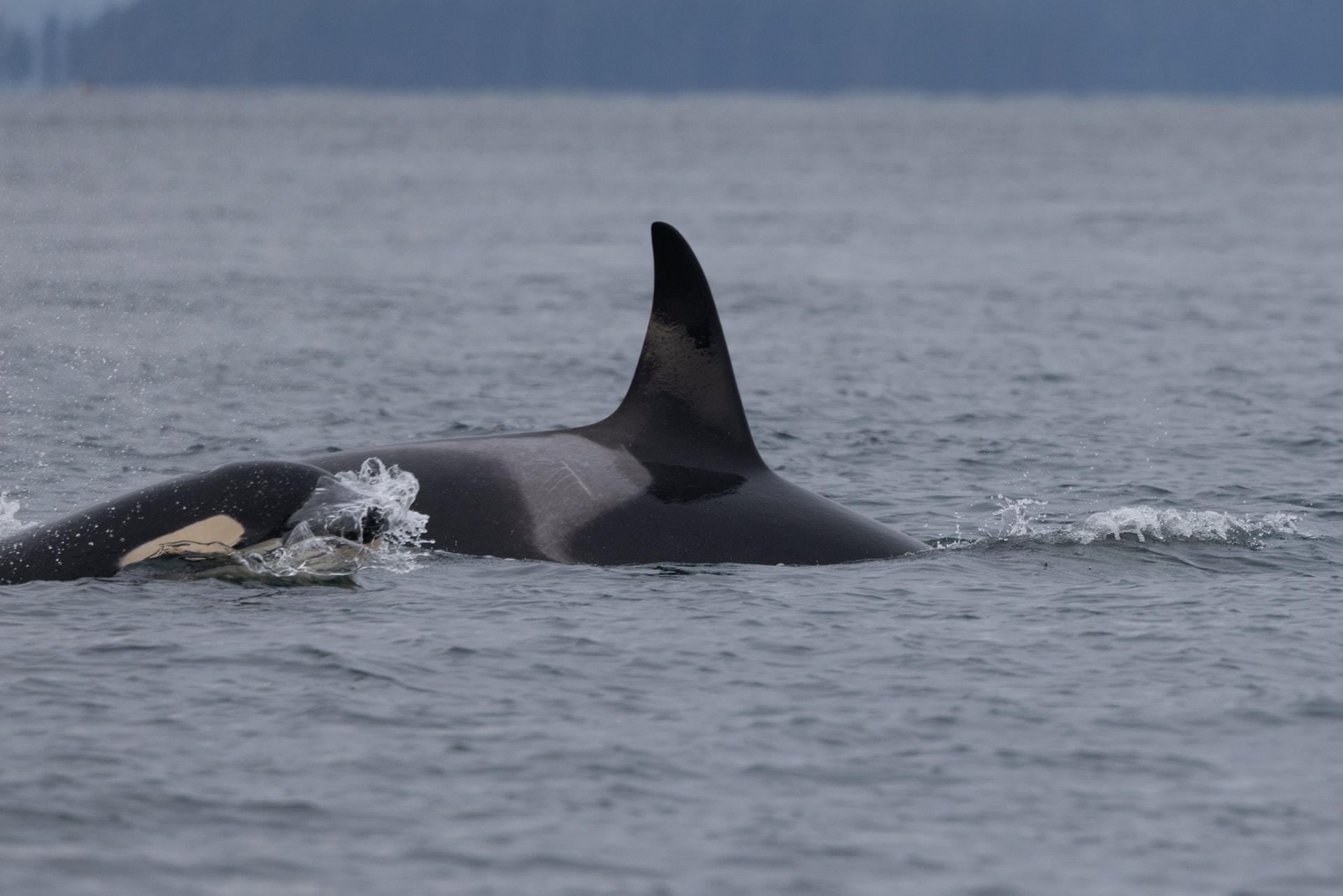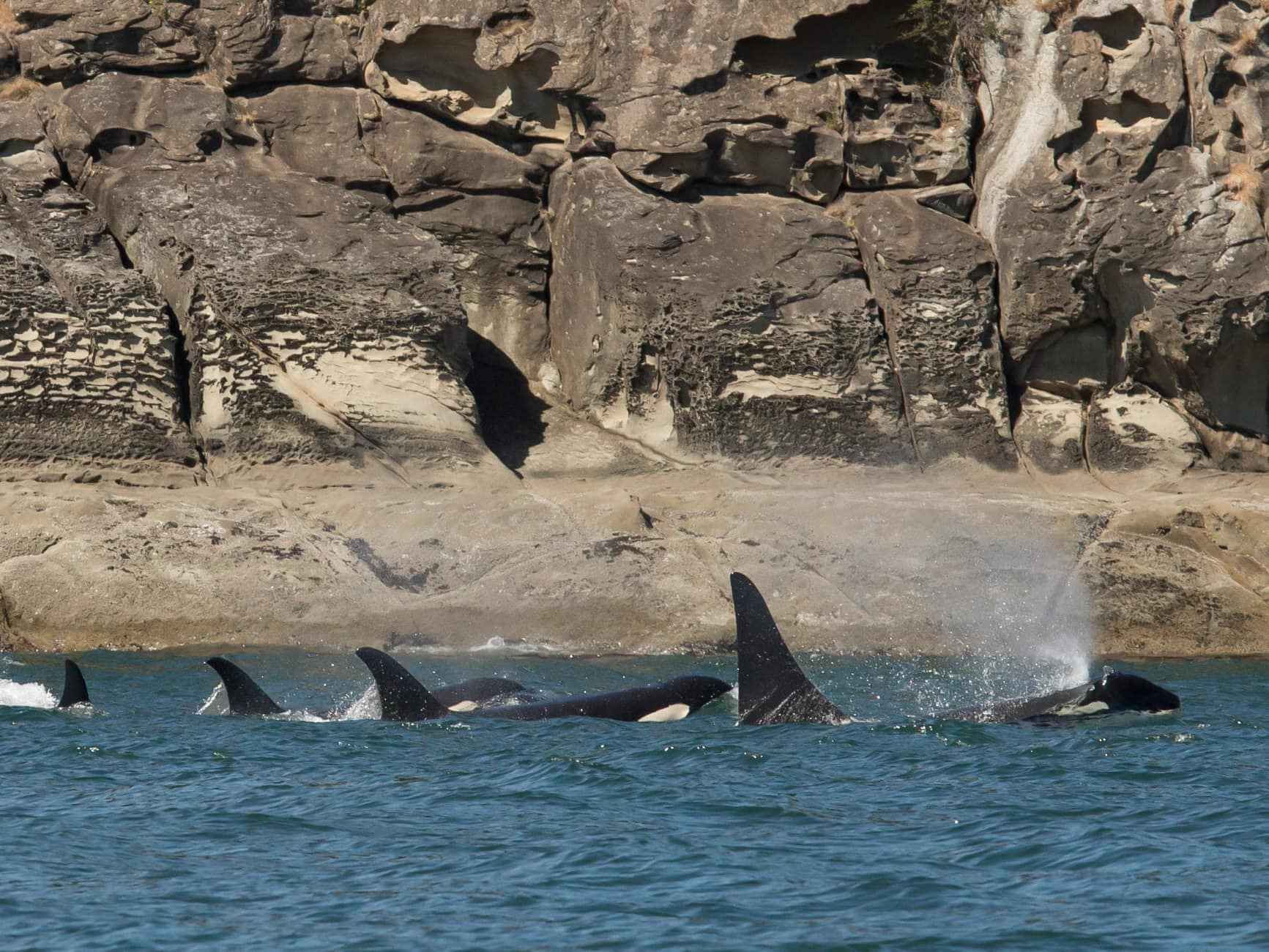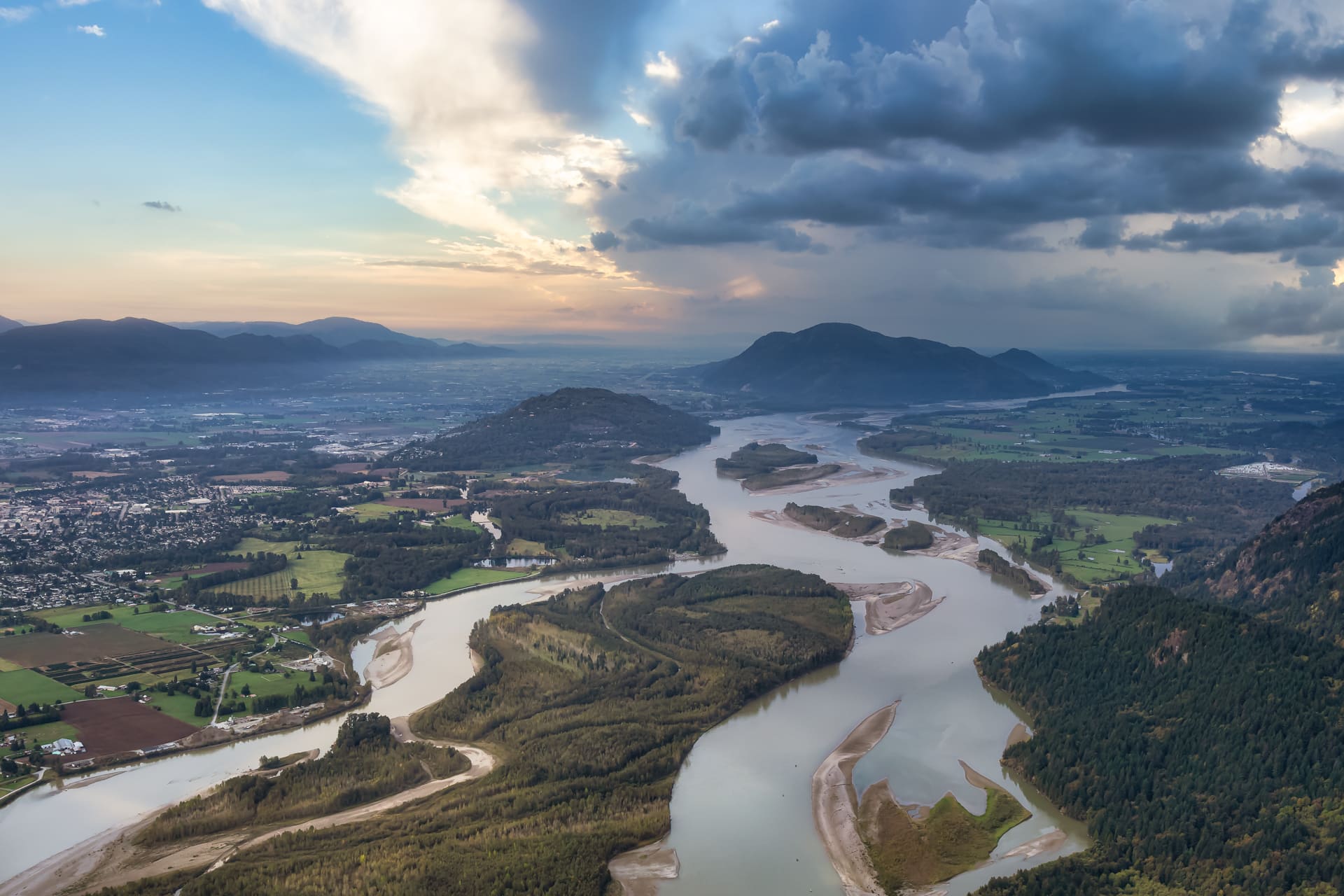
The change in timing of recurring seasonal events—known as phenology—is of increasing concern as timing mismatches between wildlife and their food sources become more common. Fraser River Chinook salmon make up to 90% of the Southern Resident killer whales’ diet from May to September, yet these whales spend less time in these feeding grounds each year. Are these predators and prey out of sync?
In a new study, Government scientists examined records from 1994 to 2017 to answer this question. Expert observers have recorded sightings of Southern Resident killer whales passing Lime Kiln Point State Park on San Juan Island since 1994. These records show days on which J, K, or L pods were seen and, just as importantly, if they were absent.

Southern Resident killer whales pass the Lime Kiln State Park lighthouse on July 11, 2022.
Why is this particular location important? According to the study, “many Chinook salmon returning to the Fraser River pass through the area where Lime Kiln is located,” and the presence of Southern Resident killer whales suggests they’re hunting salmon returning to spawn.
The study found that the number of “whale days”—days the Southern Resident killer whales passed Lime Kiln—has decreased over the last quarter century. In 2017, there were 85% fewer whale days than in 1994.
In addition, the timing of the Southern Resident killer whales’ first arrival has shifted back over time for all pods but is most noticeable for J-pod—historically seen almost year-round in these waters. The records show that J pod now visits less frequently in May and June, and the likelihood of their not returning before July has increased markedly since 2009. Such changes have considerably shifted the timing of the peak of the Southern Resident killer whale season so that it may occur up to 85 days later than just 20 years earlier.
Next, scientists looked at the timing of the return of Fraser River Chinook salmon. They noted that the migration times of some adult Pacific salmon are changing due to “climate change, hatchery, and fishing practices, or other ecosystem changes.” They examined data from the test fishery in Albion, British Columbia, as this has “tracked the spawning migration of Chinook salmon to the Fraser River system since 1981.”
Records show that the timing of their return is, on average, around 19 days later in the season than in previous years. In addition, the timing of peak abundance has shifted backward by about 40 days. Yet, the scientists noted that this change is “driven primarily by the collapse of spring Fraser River Chinook populations” rather than a later migration, “as the relative number of fish returning to spawn in the spring has declined compared to numbers returning in summer and fall.”
Continued below...
This population decline primarily explains the absence of their key predator rather than a failed timing synchronization. The scientists noted that their “findings imply that the relative benefits for Southern Resident killer whales early in the year are not as great now as they once were.” According to these scientists, while phenological mismatch is well understood, it is rarely factored in when managing resources critical to an endangered species. They noted that “knowledge of the timing of the Southern Resident killer whales’ movements to inland waters, in relation to salmon abundance and migration timing, could be used to modify in-season salmon fisheries harvest practices.”
In other words, when we know there are too few Chinook salmon in early spring to meet the Southern Resident killer whales’ daily energy needs, we should limit Chinook fisheries’ catch in US waters. For example, we know that Columbia River Chinook is a crucial alternate food source—thanks to the US government’s underwater listening stations that record their presence near this river every spring, timed right when these Chinook migrate home. Prioritizing these waters for these whales at this time is essential.
Analysis of the Southern Resident killer whales’ fecal samples shows seasonal food shortages, as their hormone levels record nutritional stress. Wild Orca’s Southern Resident Killer Whale Health Monitoring Program provides government agencies with this vital information in near real-time so they can take action promptly. Simply put, closing fisheries in critical areas for a limited time could make the difference between extinction and survival for this unique killer whale population.





